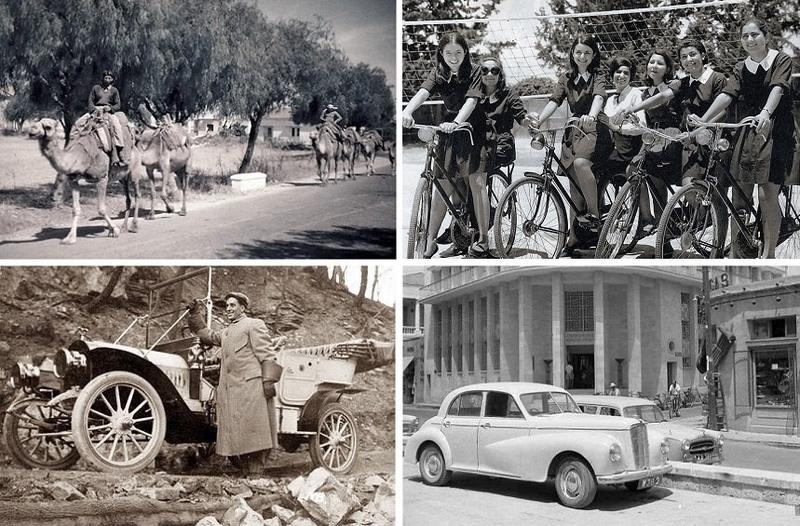
Until the arrival of the British to Cyprus, the little town of Limassol comprised only narrow carriageways. The British had other plans for the city, however. Early on, they were eager to utilize its strategic position, both for financial and geopolitical reasons.
During the Turkish occupation, animals were the main source of transport (particularly camels and donkeys), as were carriages. The design of modern roads began towards the end of the 19th century, to allow for the passage of motor vehicles, which would be faster and safer.
Though the use of animals and carriages continued until the mid-20th century (some residents still recall the use of camel-led caravans), they declined with each passing year.
Carriages and camels in the streets of Limassol. Entrepreneurs such as Heracles Skyrianides and Theodoros Mavros had set up carriage transport companies, linking Limassol with the nearby villages.
The arrival of motor vehicles completely upended daily life. Until then, making any sort of trip was a time-consuming undertaking (traveling from Limassol to Nicosia took 10-14 hours), tedious and often hazardous, particularly in the mountain villages. The first car, which was introduced in Limassol by Doctor Pieris in 1907, aimed to prove that traveling could be a simpler, more enjoyable activity.
In the early 20th century, privately owned vehicles were popular among Limassol’s elite society, and resulting in the first car dealerships, such as Willys Overland. The few cars of that era were an indicator of wealth.
Just a little bit earlier in time, the people of Limassol were introduced to the bicycle, and Ioannis Kyriakides even attempted to travel to Paphos with it. The bicycle quickly became a beloved mode of transport, particularly with the youth, and for decades was peoples’ first choice for making their rounds in the city.
The completion of road work between cities and villages allowed for the upgrade of public transport and the use of buses. Of course, from 1960 onwards, the number of private cars began to increase exponentially, resulting in the displacement of both bicycles and public transport. Today, cars dominate, both in and out of the city.
* NOTE: The tributes of the Project "History of Limassol" present information that has emerged from historical research thus far. Any new data is embedded into the tributes, once it has been confirmed.